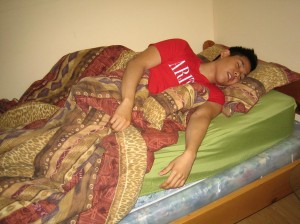Lead poisoning happens when there is accumulation of lead in the body, usually in months or years. Even small amounts of lead can result to serious conditions. Children below 6 years old are more susceptible to lead poisoning which affects the physical and mental development of the child. High levels of lead poisoning in the body can be dangerous.
[youtube url=”https://www.youtube.com/watch?v=ACM5YiHnKno”]Lead-based paints and dust contaminated with lead in older buildings are most common sources of lead poisoning in children. Lead is also present in contaminated air, water and soil. Adults working with batteries, doing home renovations or working in auto repair shops can be prone to lead poisoning.
Symptoms
Adults
- High blood pressure
- Constipation
- Joint and muscle pain
Numbness or tingling sensations of the extremities and pain - Reduced mental functioning and memory loss
- Numbness or tingling sensations of the extremities and pain
- Mood disorders
- Headaches
- Abdominal pain
- Reduced sperm count and abnormal sperm
- Premature birth in pregnant women and miscarriage
Children
- Irritability and loss of appetite
- Abdominal pain and vomiting
- Delayed development of the body
- Loss of weight
- Learning difficulties
- Constipation
- Loss of hearing
- Sluggishness and fatigue
Newborn babies
- Slowed growth and learning difficulties
Causes
- Lead found in house paint, toys of children and household furniture can result to poisoning when children eat lead-based paint chips.
- Water pipes that are made of lead, plumbing fixtures made of lead and copper pipes that are soldered using lead will release lead particles into tap water and cause poisoning.
- Other sources of lead poisoning such as particles of lead that settle on the soil coming from leaded gasoline or paint which can last for years. Glazes that are found in some ceramics, china and porcelain can contain lead and spread into food. Sometimes, lead can also be found in toys and other products from other countries and traditional cosmetics known as Kohl used as eyeliner has high levels of lead.
Treatment
- Wash hands and toys thoroughly to help prevent the risk of contamination. Wash the hands of children using warm water and mild soap for at least 20 seconds after playing outside, before eating and at bedtime. If soap is not available, use a hand sanitizer.
- Dust surfaces inside the house regularly to help remove and minimize lead dust and small particles and lessen the risk of developing lead poisoning. Wipe windowsills, furniture and other surfaces using a wet cloth. Mop the floors regularly and install an air conditioner inside the house and close all windows to help prevent dust inside the house.
- Avoid contaminated soil, cover the soil with a grass or mulch or decayed leaves, bark or compost and spread it around or over a plant to protect the soil. Provide children with a sandbox that can be covered when not in use.
- Drink plenty of water to help flush out lead from the urine. Adults should drink 9-16 cups of water every day and children should drink 5-8 glasses of water every day.
